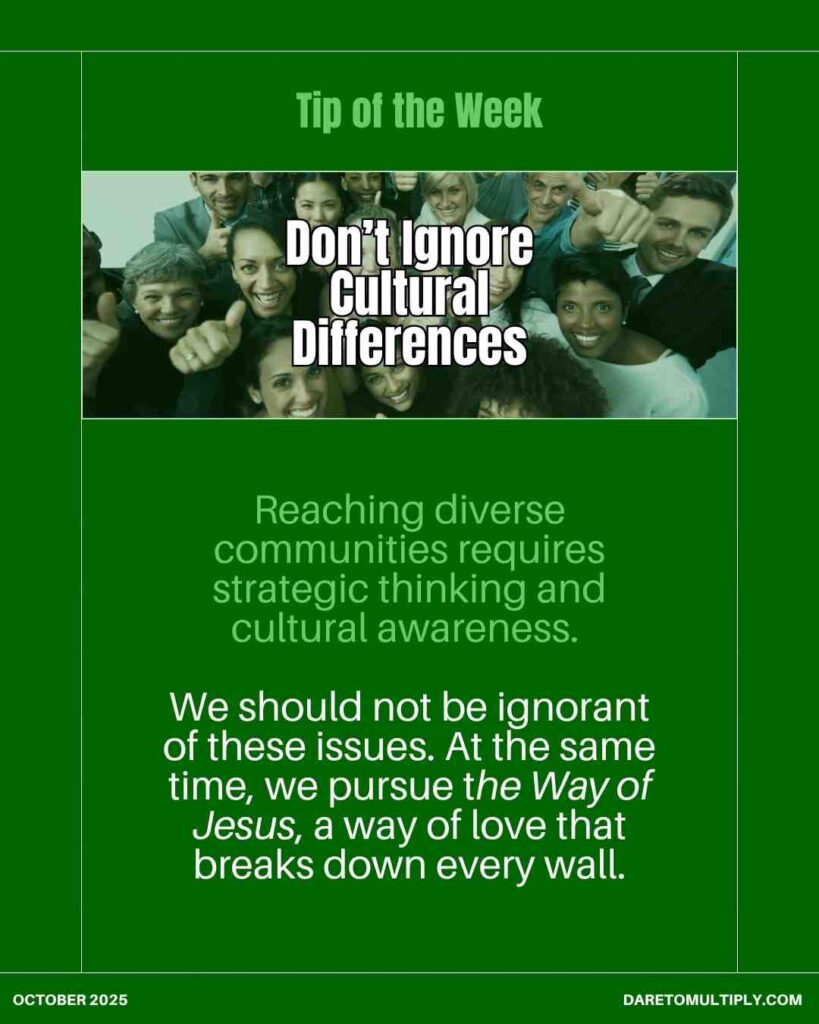Urban slum communities are often ethnically and religiously diverse, united by poverty, but divided by deep cultural and social barriers. For those pursuing Disciple Making Movements (DMMs), this complexity presents both challenges and opportunities.
DMMs grow through natural relationship networks—friends, family, and neighbors. We call these networks our oikos. These networks often follow ethnic or, in the case of Hindus, caste lines. This dynamic can make it difficult to reach multiple groups at the same time without your efforts getting stretched too thin. While some movements span several people groups, it’s usually best for individual house churches to function in their heart language and focus on one group. This allows for deeper discipleship to take place. Often, there are streams in the movement that are primarily made up of one particular class, caste, or type of people.
Urban Contexts Make it Tricky at Times
In urban contexts, the issue of mixing groups becomes more pronounced, especially in the large crowded cities of Asia or Africa. Unlike rural areas where castes and ethnicities live separately, slums often bring Hindus, Muslims, and Christians—high caste and low caste—into close proximity. Yet, the cultural barriers to presenting the gospel remain strong. Eating together, for example, can be a major hurdle between caste groups, even after conversion. How much more true before they know Jesus!
Language adds another layer of complexity. In one courtyard conversation I had in India, a story shared in Nepali using the word Parmeswor for God might suddenly need to shift to Allah when a Muslim listener joins. Navigating these language shifts requires sensitivity and wisdom.
Even in Western urban settings, similar dynamics exist. In one U.S. city, Native Americans, African Americans, and Somali Muslims lived in the same neighborhood but rarely interacted socially. Reaching such communities requires strategic thinking and cultural awareness. We should not be ignorant of these issues. At the same time, we pursue the Way of Jesus, a way of love that breaks down every wall.

Jesus’ Example: Focused Yet Responsive
In Matthew 15:21–28, Jesus initially resists a Canaanite woman’s plea, saying He was sent to the lost sheep of Israel. Yet, moved by her faith, He responds. Jesus modeled focus—knowing His primary mission or people group focus—while remaining open to those outside His target group. Later, He commissioned His disciples to reach all nations.
Practical Guidelines for Multi-Ethnic Movement Efforts
Choose a Primary Initial Focus Group
Identify one people group to invest in deeply. This helps with language learning, cultural adaptation, and the appropriate contextualization of your message. Especially if you are working cross-culturally, trying to reach everyone at once may make you ineffective.
Assign Team Members Strategically
If the vision includes multiple language or cultural groups, divide responsibilities among team members. Each person can focus on a specific group. This will help you develop a deeper understanding, closer relationships, and greater effectiveness.
Start New Groups for New Oikos
When someone from a different religion or group shows interest, begin a new group within their relational network (oikos). Avoid mixing groups unless the goal is a single church, not a movement. Starting a new group for a Muslim seeker when most of your work has been among Hindus, for example, can lead to thousands more coming to Christ rather than just one. This may sound like you are not wanting to promote unity, but remember, we are focusing on the lost, those who are not yet redeemed.
Use Heart Languages
Resist switching to a common trade language to accommodate all. I know! It’s a big temptation to do this. Movements grow fastest when discipleship happens in the language people speak at home.
Celebrate Diversity Together
From time to time, hold joint celebrations and leadership trainings across movement streams with all the varied people groups, both included, and sharing leadership from the front. This fosters unity and reconciliation while respecting cultural differences. It also prevents one group from dominating. Just be careful if food is offered to be respectful of each culture’s preferences and taboos.
Messy But Worth It
Urban disciple-making is messy—but it’s worth it. Our cities are filled with lost and broken people who need the Lord. With focus, flexibility, and faith, movements can grow across ethnic and cultural lines.
What strategies have worked in your context where there are multiple groups of people living together? Share your experience or comments below or in our Dare to Multiply Community, and let’s learn together.
Still got questions? Sign up for the Exploring Further Membership level to receive Cynthia’s more comprehensive articles that go into more detail on this and other important disciple-making topics.


